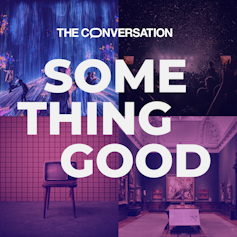London Standard’s AI-generated review, by late art critic Brian Sewell, exposes a significant philosophical threat

For the first issue in its new weekly print edition, the London Standard has run an experiment in the form of an AI-generated review of the National Gallery’s Van Gogh: Poets and Lovers exhibition, written in the style of late art critic Brian Sewell.
Experiments of this nature typically aim to link real-world observations to general theories. For experiments to successfully confirm or reject big ideas, they need a clear design and purpose. Little has been shared about the design of the Standard’s experiment and details about the training data and algorithms used are unclear. But what about the purpose?
Is this a tentative exploration of the role of the art critic? Does it aim to kindle a broader social dialogue about those human jobs that are replaceable and those that are not? Is it an ethical experiment on how technology might help us deal with the loss of cherished human lives? Or just another Turing test to judge how far from human intelligence AI still is?
If the aim can’t be determined, perhaps the review can be seen as “experimental” in a different sense – as allowing a tentative exploration of a more philosophical question about the ways in which humans can be reduced to machines.
This article is part of our State of the Arts series. These articles tackle the challenges of the arts and heritage industry – and celebrate the wins, too.
One possibility is that this new technology might lead to what Israeli academic and author Yuval Noah Harari has called “de-individuation”. Because so much about ourselves as human beings – what we think, what we believe, what we love or whom we love – can be reduced to AI data points, we are in a sense broken apart or fragmented by it. As such, training an AI system on Sewell’s collected writing splinters the person he once was.
Critics have scoffed at the AI-written review, deeming it a pale copy that fails to capture “the waspishness and hauteur of Sewell’s writing”. But this view obscures a greater realisation of the philosophical threat this technology poses – the reduction of the human to the machine.
What philosophers say about this threat
The philosopher Hannah Arendt offered a chilling argument against such reductionism in her 1958 book The Human Condition. She warned of a world where powerful computing machines seem to approach independent thinking and consciousness. However, she argued that whether this could count as thought depends on whether we are willing to reduce our own thinking to mere calculation and computation.
Arendt believed that we can and should resist such a reduction, as humans have diverse ways of engaging with the world. In The Human Condition, she distinguishes between what she calls “labour”, “work” and “action”. If labour is natural and work is artificial, for Arendt, action is closer to the sphere of unconstrained human creativity.
“Action” is what people do when they use language to tell the stories of their lives. It is a form of communication: by means of language we are able to articulate the meaning of our actions and to coordinate our actions with those of others, different from us.
Hannah Arendt photographed by Barbara Niggl Radloff in 1958.
Sammlung, CC BY-SA
But Arendt worried that this kind of creative, human interchange through language and storytelling, might be reduced to mechanical construction – to something artificial. She also insisted that if the telling of the story needs the individual to take a stance and act in the world, its persistence depends on there being other people to hear and to retell it, perhaps in different forms. It depends, to a certain extent, on trust. But this trust bond is threatened if human action is reduced to what can be produced by a machine.
Another philosopher, closer to our times, who worried about the erosion of trust brought about by the wide, unreflective development and adoption of AI was Daniel Dennett, who died earlier this year. In his most alarmist moments, Dennett argued that the most pressing problem is not that AI will take jobs or change warfare, but that they are going to destroy human trust.
Even if large language models (AI systems that are capable of understanding and generating human language by processing vast amounts of text data) will never think like humans think, even if they won’t be able to tell their own stories, there is still the very real possibility, according to Dennett, that they will move us into a world where we won’t be able to tell truth from falsehood – where we won’t know who to trust. And that is a scary thought experiment that the Standard might (unintentionally) have brought to our attention.

Looking for something good? Cut through the noise with a carefully curated selection of the latest releases, live events and exhibitions, straight to your inbox every fortnight, on Fridays. Sign up here.
![]()
Maria Serban does not work for, consult, own shares in or receive funding from any company or organisation that would benefit from this article, and has disclosed no relevant affiliations beyond their academic appointment.







